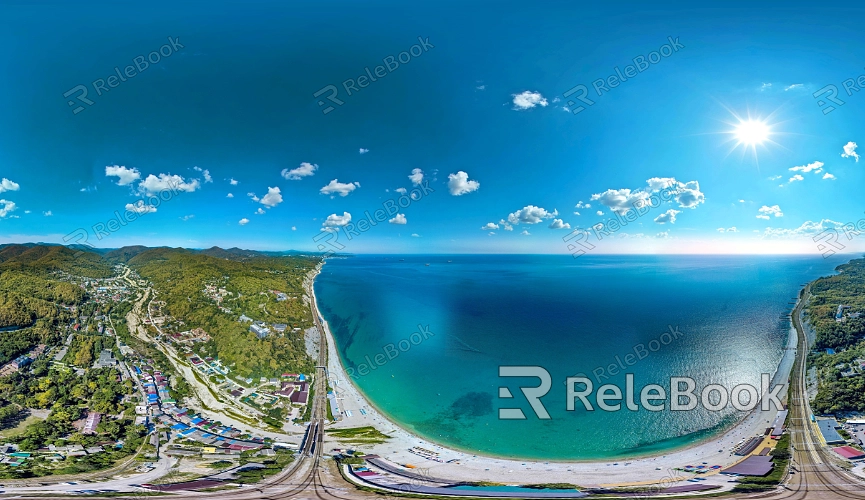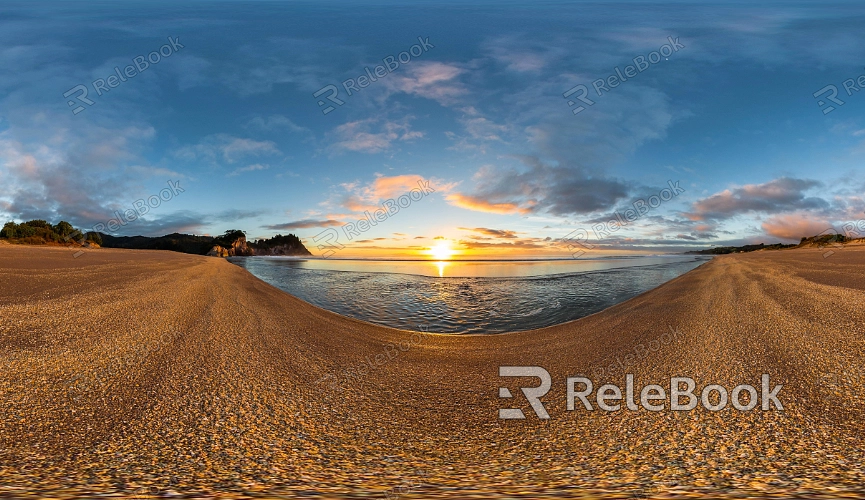What is HDR Rich Tone?
HDR rich tone refers to the process in HDR image processing that enhances color depth and detail through optimized tone mapping, resulting in more visually impactful and realistic final renders. This is especially crucial in fields like architectural visualization, filmmaking, and game development, where dealing with complex lighting and colors requires heightened visual quality. This article will explore the definition of HDR rich tone, its applications in 3D software, methods of adjustment, and strategies to optimize its use, helping designers better master this technique.

1. Definition and Importance of HDR Rich Tone
Definition:
HDR rich tone is a technique used to enhance color depth and detail in high dynamic range images through optimized tone mapping. The core of tone mapping lies in compressing the wide range of HDR brightness into the standard dynamic range (SDR) suitable for display devices while retaining as much color information and detail as possible.
Importance:
For projects requiring precise control over lighting effects—such as architectural visualization, automotive advertising, game environments, or cinematic effects—adjusting HDR rich tone is essential. Effective tone mapping ensures that critical color information is preserved during the conversion process, resulting in a final render with superior contrast and color performance.
2. Common Applications of HDR Rich Tone
Architectural Visualization:
In architectural visualization, HDR rich tone helps designers showcase the details and materials of a building under natural lighting. Whether it's a sunrise, sunset, or nighttime scene, adjusting tone mapping allows designers to accurately control how light interacts with building surfaces, enhancing overall visual realism.
Game Development:
In game development, HDR rich tone is widely used to render high dynamic range scenes, such as a city at sunset or battle scenes within flames. Through tone mapping, the color depth of the game visuals is enriched, providing players with a more intense visual experience.
Film Production:
In post-production, HDR rich tone is employed to adjust scenes with complex lighting changes, especially in sci-fi or action-packed movies. Fine control over tone mapping allows for more nuanced transitions in lighting and shadows, improving the viewer's experience by making visual effects more intricate and lifelike.
3. Adjusting HDR Rich Tone in 3D Software
Blender:
In Blender, designers can adjust HDR rich tone through the "Tone Mapping" option in color management. By tweaking parameters like "Exposure" and "Contrast," users can control the brightness and color depth of the image, achieving a more balanced and layered final render.
3ds Max:
When using 3ds Max, designers can adjust HDR rich tone through the "Tone Mapping" feature in the V-Ray renderer. V-Ray allows users to preview the effects of different tone mapping settings before rendering, helping to choose the most suitable parameters for the scene and ensuring the color vibrancy of the final image.
Cinema 4D:
In Cinema 4D, designers can handle HDR rich tone with the "Physical Renderer." By adjusting the "Tone Mapping" and "Exposure Control" options in the render settings, users can fine-tune the distribution of light and color within a scene, ensuring that every detail is clearly represented in the image.

4. Strategies for Optimizing HDR Rich Tone
Choosing the Right Tone Mapping Method:
Different tone mapping methods affect the color and brightness of an image in various ways. Selecting the appropriate method can enhance the depth of color and detail while maintaining the overall brightness range of the image.
Calibrating Monitors:
When adjusting HDR rich tone, it's crucial to use an HDR-capable, calibrated monitor. A well-calibrated display accurately shows the effects of tone mapping, helping designers better control the final output of the image.
Using High-Quality HDR Assets:
During rendering, using high-quality HDR assets provides a broader range of color and brightness, forming a solid foundation for adjusting HDR rich tone. High-quality assets usually contain more brightness and color information, allowing more detail to be preserved in post-production adjustments.
5. Impact of HDR Rich Tone on Design Workflow
Enhancing Visual Quality:
By optimizing HDR rich tone, designers can significantly improve the visual quality of rendered images, making the light and color transitions in virtual scenes more natural. This is particularly important for projects that require a high level of realism, such as architectural visualization and virtual reality applications.
Reducing Post-Processing Time:
Properly setting HDR rich tone can reduce the time spent on post-processing. By achieving images that are close to the final look during the rendering phase, designers can minimize manual adjustments to color and brightness, thereby improving workflow efficiency.
Boosting Visual Impact:
HDR rich tone can enhance the visual impact of an image by making bright areas and color layers more prominent, drawing the viewer's attention. This is especially crucial in advertising design and product presentations, where capturing the viewer’s eye in a short time is key.
HDR rich tone offers 3D modeling and rendering designers a broader range of creative possibilities, enabling them to recreate complex lighting effects more realistically in virtual environments. If you're looking to access high-quality HDR resources, 3D models, or textures, Relebook is your best choice. Relebook provides a rich library of assets and an easy-to-use search function, helping you streamline your design process and achieve exceptional results.

